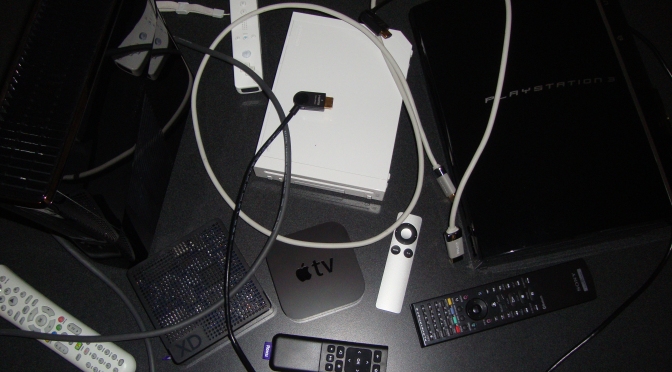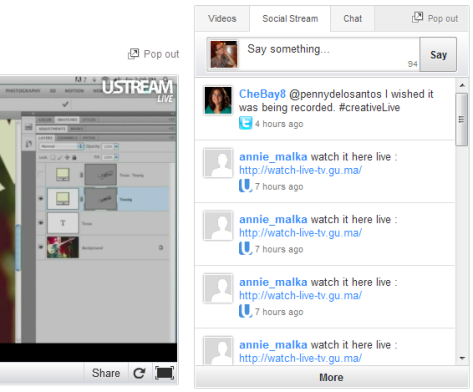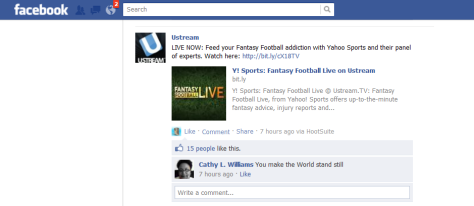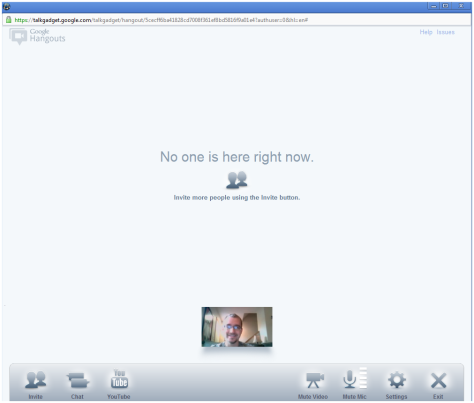Editor’s Note: Eric Zimmett is a tech writer and small business consultant who works at StateCollege.com assisting businesses with how to navigate today’s difficult marketing and advertising landscape.
In his inaugural tech column for StateCollege.com, Eric Zimmett gives you five things small business owners should be doing. His “Tech Talk” column appears biweekly on StateCollege.com.
5. Social Media
Social Media is a great space to interact with customers on a variety of fun, engaging platforms.
Use social media as a conversation with your customers – to strengthen existing relationships, build new ones and give a little taste of your personality as a business owner.
Today, your customers will expect you to be using social media. Participate: launch a Facebook Page; use Twitter, Foursquare or Pinterest. Engage and interact with your audience.
![]()
Facebook is an excellent hub for conversations, news, comments, contests and photos. Facebook also offers a small-business advertising program. A good Facebook Page requires quality content and regular frequency. Update your Facebook Page every day and respond to comments and questions promptly.
Facebook rolled out its new Timeline layout to all brand pages Friday. Read more about the new brand pages at facebook.com/about/pages. Not on Facebook Pages? Get started at facebook.com/pages/create.php
![]()
Twitter announced last week, on its sixth birthday, that it has reached 140 million users (in tune with its 140-character limit). The micro-blogging platform serves as a way to alert followers of news, specials, changes or insight into the company.
This week, Twitter introduced Twitter for Small Business, self-serve ads including promoted accounts and promoted tweets. Learn more at business.twitter.com. Join Twitter at twitter.com/account/new.
Foursquare
![]()
Foursquare is a mobile application that rewards customers for visiting your business. Reward check-ins with a special discount or offer. Or award your most frequent customer – which Foursquare dubs Mayor – with the highest prize.
Foursquare requires minimal effort to keep going. Unlike Facebook Pages and Twitter profiles, Foursquare is user-generated. Users check-in on their own. Users unlock specials that you’ve created and compete with friends on their Leaderboard.
Is your business already on there? Claim your venue at foursquare.com/business.
![]()
Pinterest is a pin-board for interests. Launched just two years ago the site has already eclipsed 11 million users, according to a January report by comScore, becoming the fastest site in history to reach the 10-million mark. Businesses have found recent success on Pinterest by interacting with users and sharing company photos and/or products. The best part of Pinterest is the ease of sending visitors from a Pin to your website or product page, especially when it comes to e-commerce.
4. Blogging
A blog is a great way to share your expertise in your field, to brand yourself as an expert.
It’s also a great way to stay on top of trends, new information and be connected with your industry. Start a blog and stick to a regular schedule to keep your posts fresh and relevant.
Three leading blog services are WordPress, Blogger and Tumblr.
Keep your content focused. Don’t sell your business on your blog; that will happen organically after you’ve branded yourself as an expert in your industry.
3. YouTube
The best part about YouTube – other than those funny cat videos – is that you can build your own online TV network free of charge.
Build a YouTube Channel and either link to videos in your industry (Informational Videos or How-To videos) or record them yourself. Creating the videos on your own allows the viewer to get to know your business.
A new feature introduced last week by YouTube allows for simplified video editing, making it even easier to get started with your own channel.
2. Get on the Street
Slow business day? Well don’t just sit there, hit the streets! Talk with your customers one-on-one. Offer samples, coupons, or ask questions. What better a way to get customer feedback than talking directly to them? Thinking of implementing a new menu item? Or changing your store layout? Ask people on the street. Some won’t want to talk to you. Focus on the ones who do.
Put your face in front of the business. Then your customers aren’t just shopping at the store on the corner, they’re shopping at your store on the corner: Bill’s office supplies, John’s book store, Wendy’s coffee shop. They’ll connect with your business on a more personal level.
1. Advertising
Advertising isn’t just for national brands. Local businesses need it more than anyone. It isn’t enough to just open your doors and hope people come in. Advertising builds companies. It informs, sometimes entertains, and reminds customers that you’re there, and that you have the products they want and the expertise to service them.
Believe it or not, it’s possible to generate word-of-mouth. It’s called advertising. When you advertise your business, and advertise the same message often enough, you’re using word-of-mouth to build buzz about your business.
Search-engine marketing is an online super-highway where you can connect with customers who are searching for your products and/or services. Make sure your website is well optimized and contains information – skip on the fluff – that best portrays your business.
If you don’t know how to build an effective website or make it search-engine friendly, find someone who does. Being visible when customers are searching for you is an important step in acquiring new customers.
What are you waiting for?!
So get out there and talk with your customers; whether it’s in person, in the ads or on your blog. Be friendly. Be yourself. Have fun. Interaction is key. Show people how much you love your business. Because if you do it well enough, they will too.
–


































